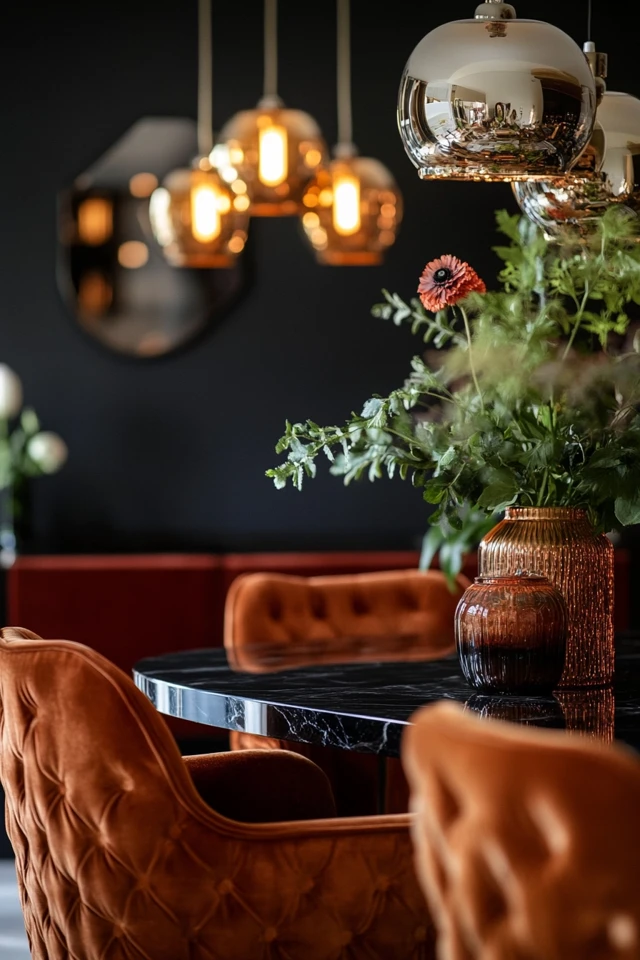Introduction
Mid-century modern interiors have long been a darling of the design world. Their clean lines, functional furniture, and timeless appeal make them a staple in interior design. But what if you want to give this classic style a little extra flair? How do you take it from “iconic” to “show-stopping”? Enter retro glamour—a dash of opulence that adds drama and sparkle without overpowering the simplicity of mid-century design.
The first time I attempted this blend, it was for a client who loved mid-century modern but wanted something unique for their dining area. They envisioned the sleek lines of Eames-inspired chairs but with the sophistication of golden chandeliers and plush velvet. It was an exciting challenge because retro glamour isn’t about overloading a room with glitz—it’s about curating a space where elegance and nostalgia intertwine effortlessly. I fell in love with the results, and since then, I’ve been incorporating this style in my own home and for other clients.
Why does this combination work so beautifully? Mid-century modern design is inherently versatile—it provides a minimalist canvas that’s perfect for layering. Retro glamour, with its hints of metallics, velvet, and crystal, feels like the jewelry on an already stunning outfit. The key is balance, and in this post, I’ll share how you can achieve that seamless harmony of styles in your own space.
The Basics of Mid-Century Modern and Retro Glamour
What Defines Mid-Century Modern?
Before diving into retro glamour, let’s understand the foundation of mid-century modern design:
- Simplicity and Functionality: Clean, sleek lines and minimal ornamentation are hallmarks of this style.
- Natural Materials: Think teak, walnut, and oak alongside earthy colors like olive green and mustard.
- Iconic Furniture: Pieces like the Eames lounge chair, Noguchi coffee table, or Saarinen tulip table are the epitome of this era.
- Open Layouts: Spaces are designed for flow and functionality.
What Is Retro Glamour?
Retro glamour is the chic cousin of vintage, borrowing the luxe elements of the past:
- Luxurious Textures: Velvet, silk, and fur (real or faux) create a rich sensory experience.
- Gilded Accents: Gold, brass, and mirrored finishes elevate a space.
- Drama in Design: Crystal chandeliers, ornate mirrors, and bold patterns draw the eye.
Blending these styles requires you to respect the clean lines of mid-century modern while selectively layering glamorous touches that amplify its timeless beauty.
Strategies for Adding Retro Glamour
1. Play with Luxurious Textures
Mid-century modern design leans on natural woods and smooth finishes. To infuse glamour:
- Add Velvet Upholstery: Replace neutral fabric cushions with velvet ones in jewel tones like emerald, sapphire, or ruby.
- Layer Rugs: Use a shag or Persian-style rug to add texture under a sleek mid-century sofa.
- Fur Throws and Pillows: Drape faux fur over an Eames chair or add fur-accented pillows for a tactile contrast.
2. Introduce Metallic Accents
Metallics are the hallmark of retro glamour. Incorporate them sparingly to enhance, not overwhelm:
- Gold and Brass: Swap hardware on cabinets and side tables for brass handles or knobs.
- Lighting Fixtures: Replace a minimalist floor lamp with a gold Sputnik chandelier.
- Mirrors with Gilded Frames: Hang an oversized mirror with a vintage gold frame above a teak console table.
3. Select Statement Lighting
Lighting is the crown jewel of retro glamour. Mid-century modern designs often feature understated fixtures, but you can elevate the room with:
- Crystal Chandeliers: A glamorous chandelier above a tulip dining table creates a focal point.
- Brass Floor Lamps: A curved floor lamp with a gold finish complements the clean lines of mid-century furniture.
- Table Lamps with Personality: Look for ceramic bases with metallic accents or velvet lampshades for added charm.
4. Blend Color Palettes Thoughtfully
Mid-century modern interiors typically use earthy tones, while retro glamour invites vibrant and luxurious colors:
- Jewel Tones: Introduce emerald, amethyst, and sapphire as accent colors through pillows, artwork, or upholstery.
- Black and Gold: For a dramatic contrast, use black as a grounding color and gold for highlights.
- Soft Neutrals: Balance bold colors with muted neutrals like beige, taupe, or charcoal.
5. Accessorize with Purpose
Decor is where the glamour really shines. Choose accessories that feel curated, not cluttered:
- Bar Carts: A gold-framed bar cart with vintage glassware screams retro sophistication.
- Artwork: Select bold abstract pieces or metallic prints that evoke mid-century themes.
- Ornate Mirrors: A large mirror with an intricate gold frame becomes a statement piece.
6. Invest in a Glamorous Focal Point
Create a “wow” moment in the room that ties the look together:
- Statement Sofa or Chair: Choose a mid-century sofa in a bold velvet finish.
- Decorative Fireplace: If you have a fireplace, frame it with a gilded mantel or dramatic mirror above it.
- Coffee Table Centerpiece: Use a marble or mirrored coffee table styled with metallic decor.
Picture Gallery
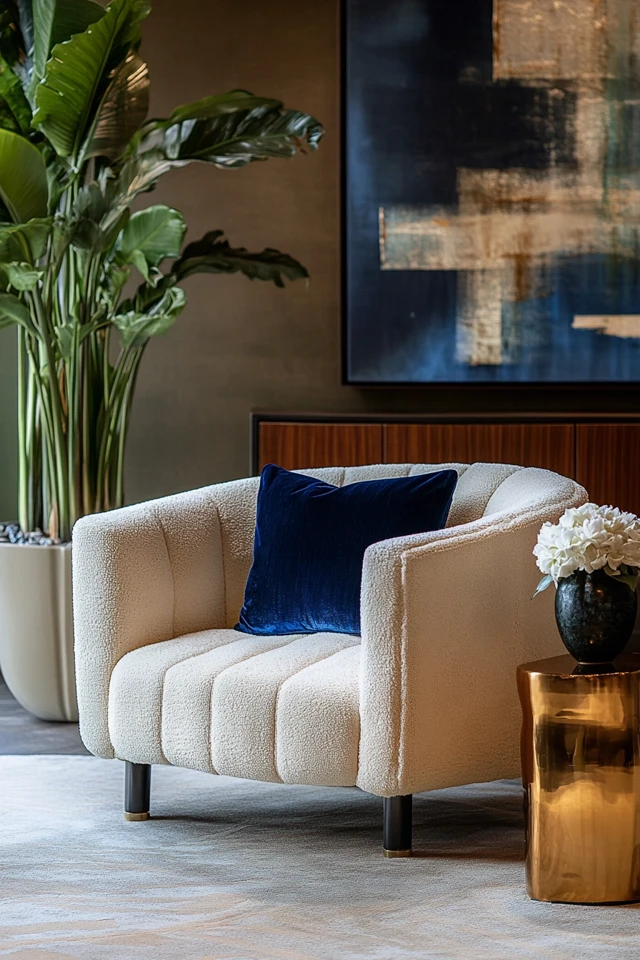
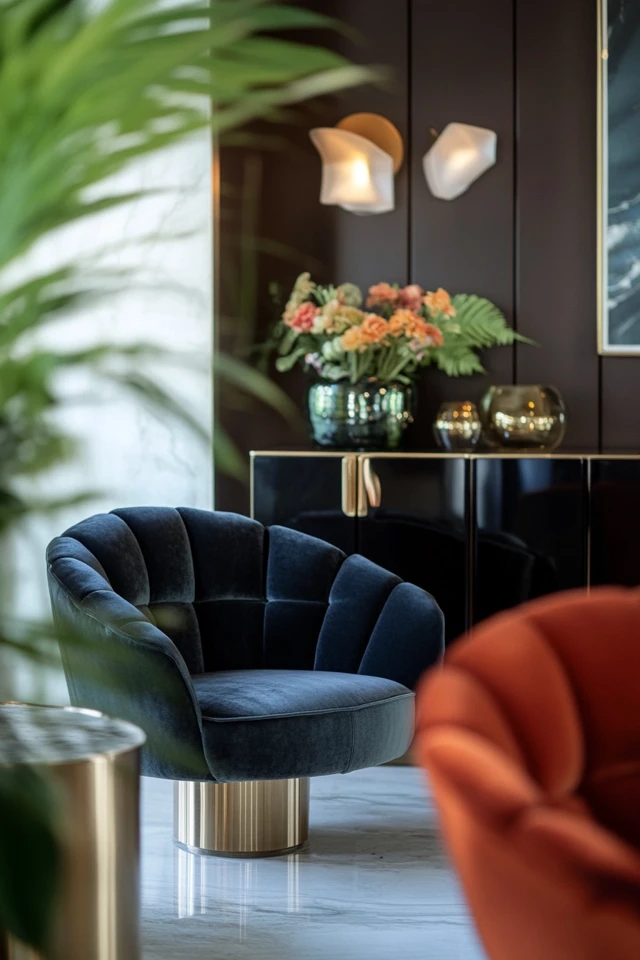
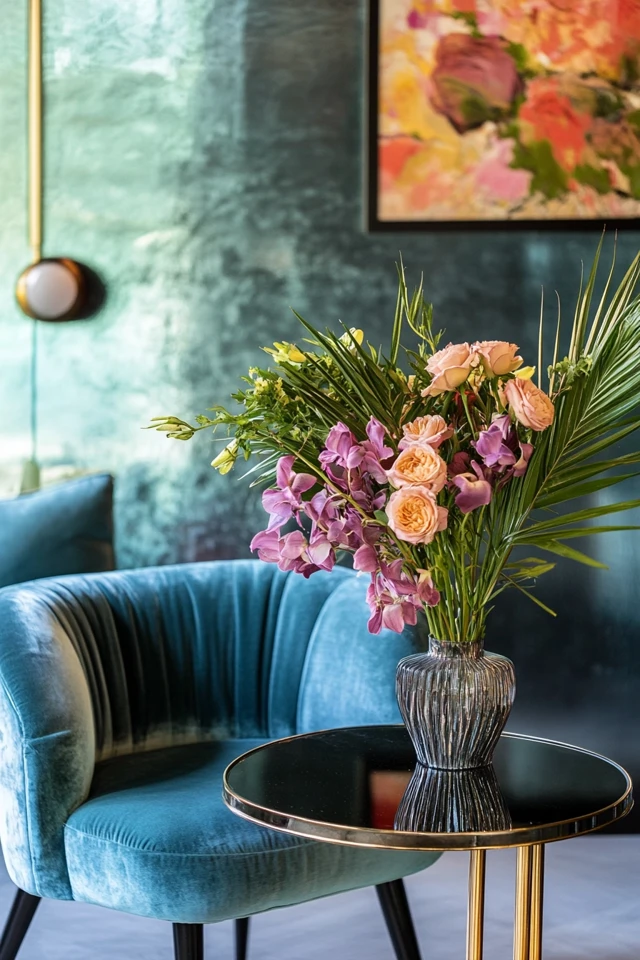
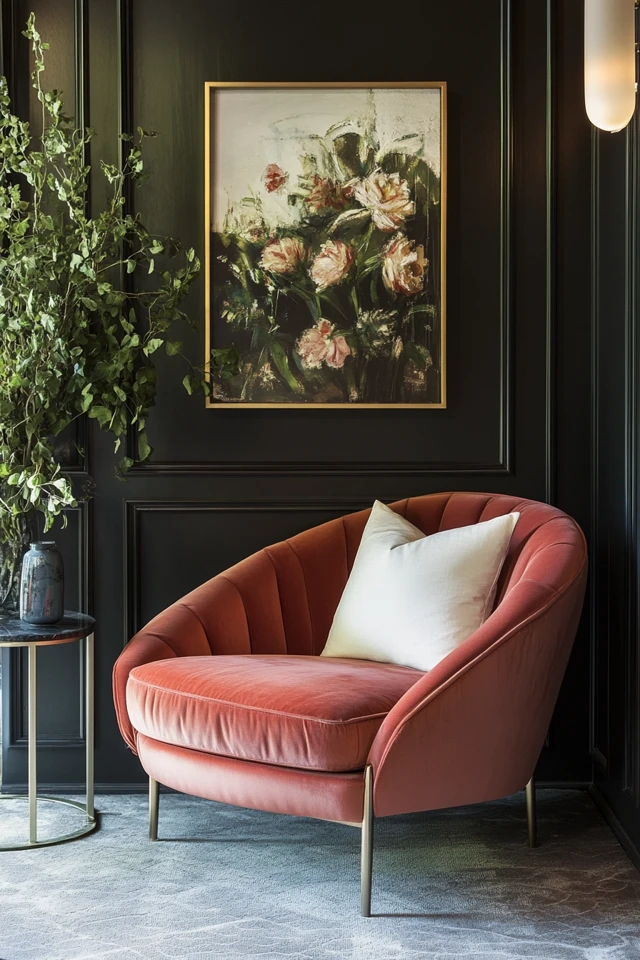
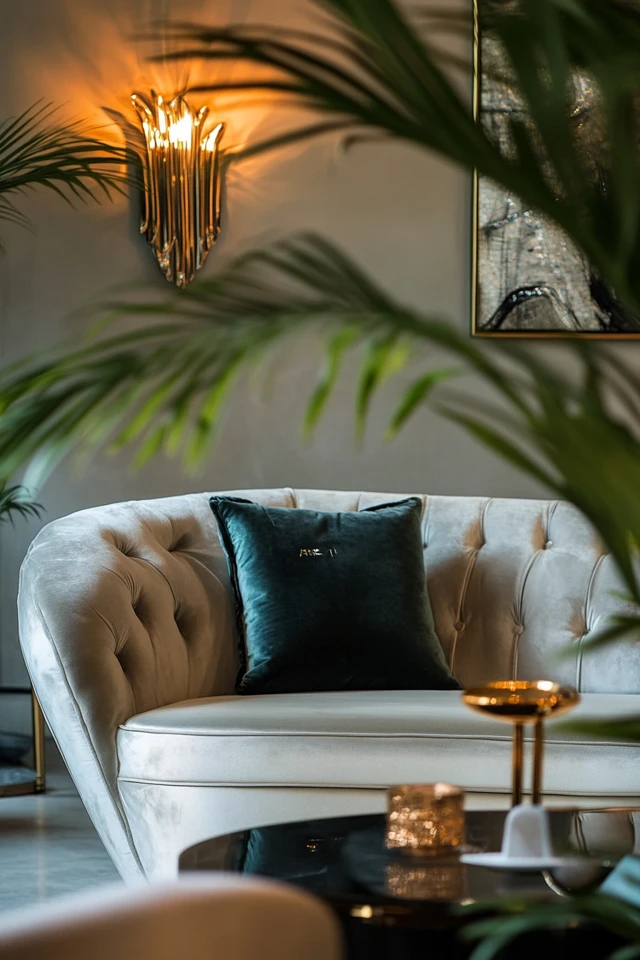
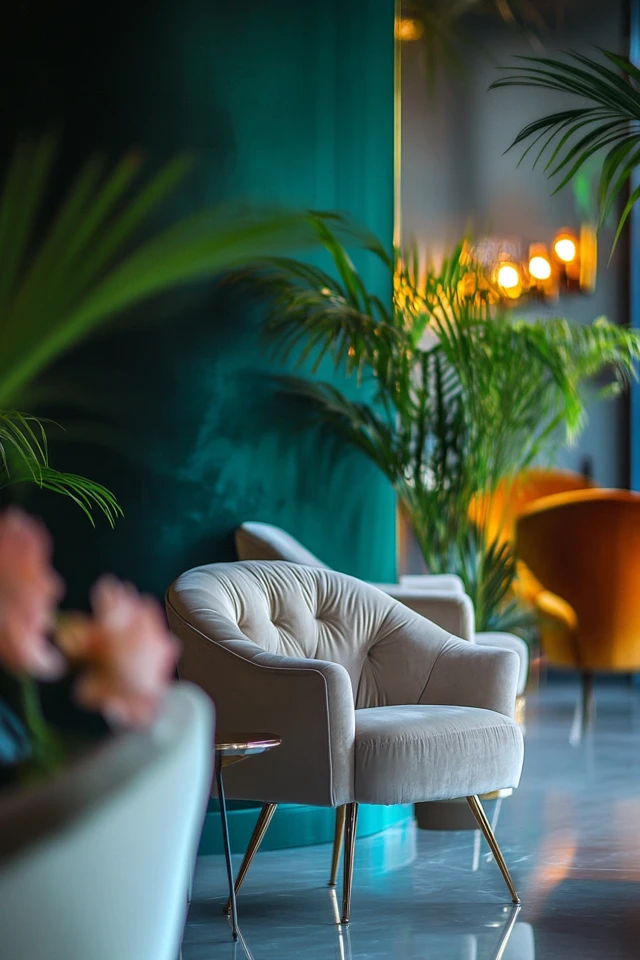

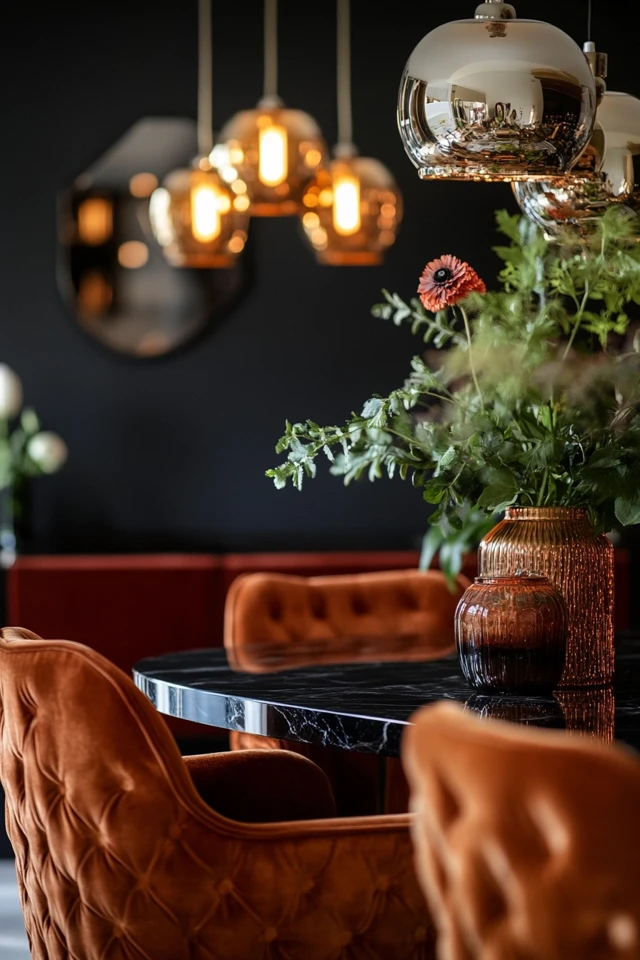
Tips for Creating Balance
1. Prioritize Functionality
Never sacrifice functionality for aesthetics—this is the essence of mid-century modern. Glamorous touches should enhance usability. For instance, a gold-trimmed coffee table with a functional drawer combines practicality and elegance.
2. Scale Matters
Mid-century modern thrives on balance. If you’re adding a large chandelier, keep other elements like furniture and accessories understated to avoid visual clutter.
3. Stay True to Your Style
Finally, make the space feel like you. Whether you lean towards bold drama or subtle elegance, find pieces that resonate with your personality.
Conclusion
Blending retro glamour with mid-century modern design is like pairing your favorite vintage dress with a modern handbag—it just works. The key lies in creating harmony between the two styles. By layering luxurious textures, introducing gilded accents, and curating statement pieces, you can transform a mid-century space into one that oozes sophistication and charm.
I’ve seen this style come to life in countless ways—from velvet sofas that invite you to sink in to sparkling chandeliers that catch the evening light just right. It’s an approach that combines the best of two worlds: the timeless appeal of mid-century modern and the unapologetic elegance of retro glamour.
So, what are you waiting for? Dust off those Eames chairs, polish your brass candlesticks, and get ready to create a space that feels both iconic and luxurious. And remember, design is a reflection of who you are—so don’t be afraid to let your personality shine through.
FAQ
What colors work best for blending mid-century modern with retro glamour?
Jewel tones like emerald, sapphire, and ruby complement the natural woods of mid-century modern furniture. Pair these with gold or brass accents for a glamorous finish.
How can I add glamour without overpowering the simplicity of mid-century modern design?
Focus on small touches like velvet cushions, gilded hardware, or a statement lighting fixture. These accents add glamour while maintaining the clean lines and simplicity of mid-century design.
Are there specific materials that embody both styles?
Yes! Velvet, brass, and marble are versatile materials that embody retro glamour while pairing beautifully with mid-century modern furniture.
Can I mix patterns in this style?
Absolutely! Mid-century modern often features geometric patterns, which can be paired with bold retro designs like art deco prints. Just keep the color palette cohesive to avoid clashing.
Where should I start if I’m new to this style?
Begin with a statement piece, like a velvet sofa or a gilded chandelier, and build the room around it. Incorporate mid-century furniture and add retro glamour through textures and accessories.

